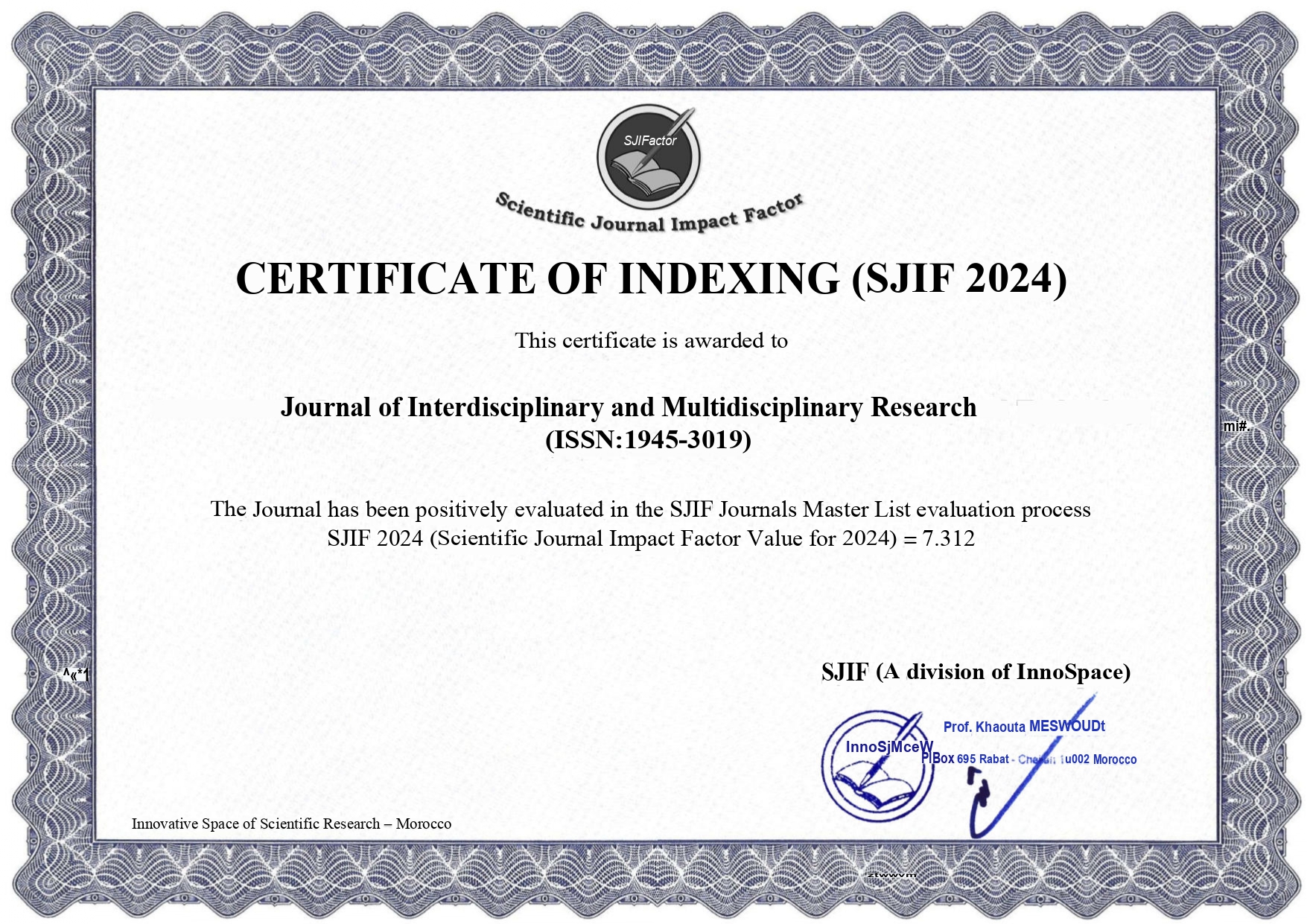Hybrid Polymer/Metal Oxide Nanocomposites for Application of Combating Antimicrobial Resistance Materials
DOI:
https://doi.org/10.5281/zenodo.16940458Keywords:
Polymer, Nanocomposites, Antimicrobial Activity, Polyaniline (PANI), Nickel oxideAbstract
Polyaniline-NiO (PANI-NiO) nanocomposites reinforced with NiO nanoparticles in a polyaniline matrix were successfully manufactured using a simple perfunctory mixing procedure. PANI-NiO nanocomposites were used to describe the intermediates and final products of the nanocomposites using spectroscopic techniques and antimicrobial studies. In addition to studying the chemical structure, optical properties, crystalline nature, heat conductivity, surface morphology, and antibacterial agents, this work provides a straightforward and effective way to control PANI-NiO nanocomposites. The synthesized PANI's conductive emeraldine base form was validated by UV-Vis and FTIR data, the creation of PANI-NiO nanocomposites and the electrical interaction between PANI and NiO was confirmed. X-ray diffraction studies have demonstrated that the PANI matrix and NiO nanoparticles can be successfully incorporated to create hybrid nanocomposites. Scanning electron microscope (SEM) micrographs demonstrated that PANI was effectively enlarged by NiO treatment and that the final nanocomposite had completely exfoliated NiO powders. The thermal stability of the complex was investigated using thermogravimetric analysis, which demonstrated that the polymer nanocomposites increased the thermal stability over pure organic polymers. When the antibacterial activities of the molecules were investigated, PANI-NiO was found to be a highly effective antibacterial agent. The intercalation of PANI into the NiO nanoparticles is thought to be the reason for the increase in antibacterial agents in the PANI-NiO nanocomposites. The above systematic investigation reveals that the NiO nanoparticles in the PANI matrix have a phenomenal effect on determining the important and antibacterial properties of the nanocomposites.
Downloads
Published
Issue
Section
License
Copyright (c) 2025 P. Suresh, N. Dhachanamoorthi, M. Parthibavarman, Sathish Sugumaran, Subha Krishna Rao, K. Oviya, Jeshaa Dharshini (Author)

This work is licensed under a Creative Commons Attribution 4.0 International License.






